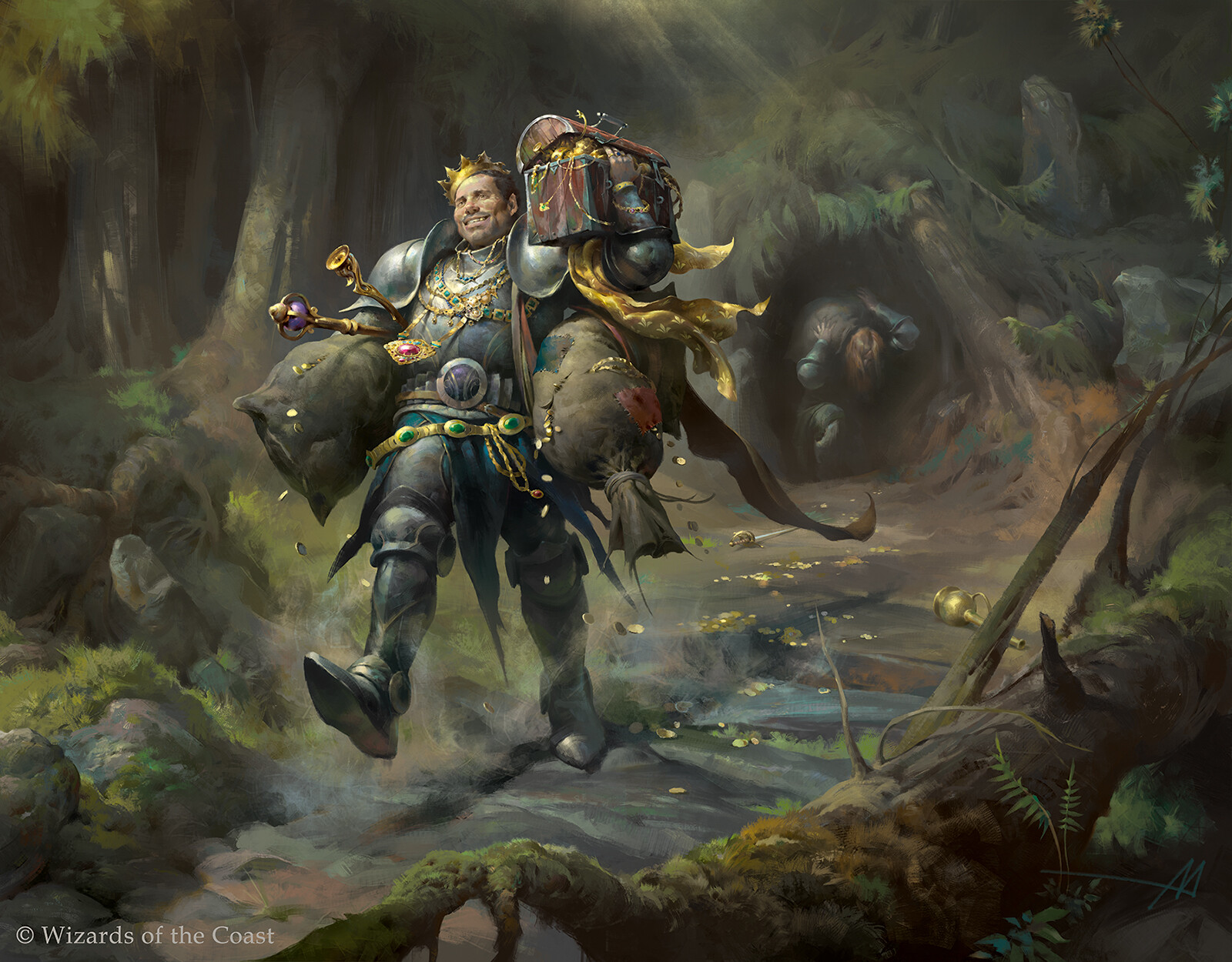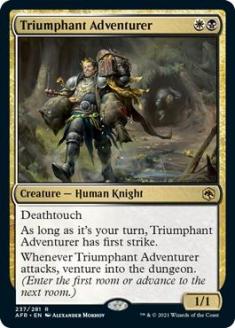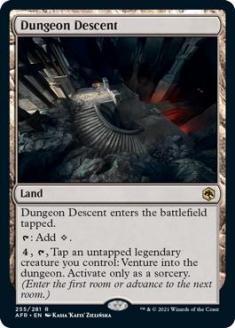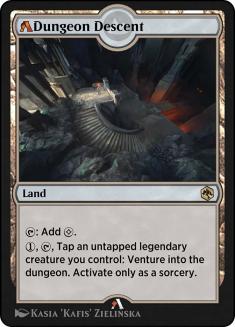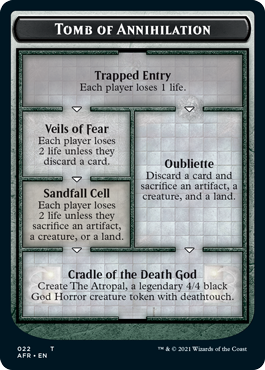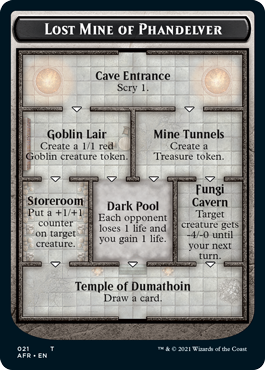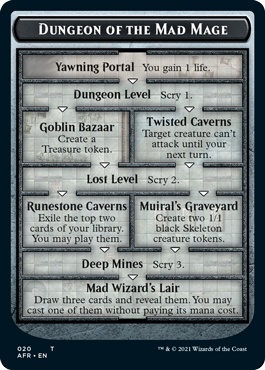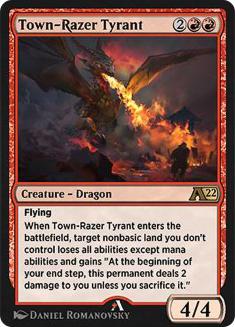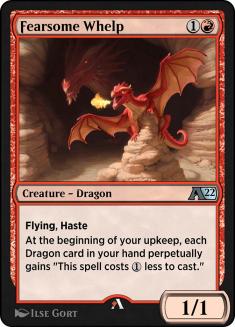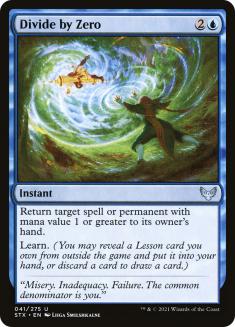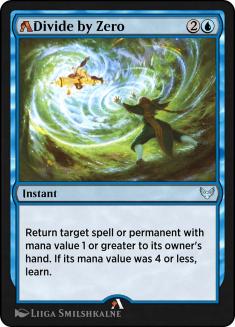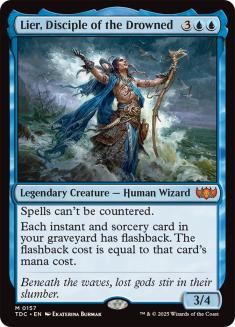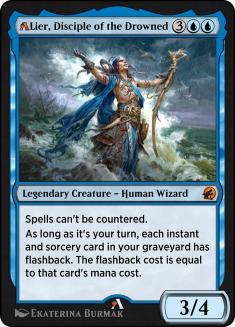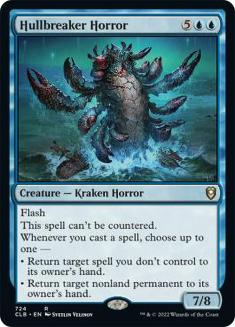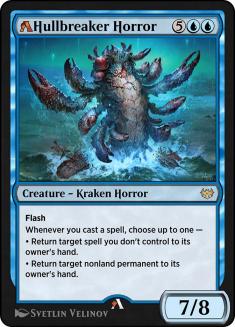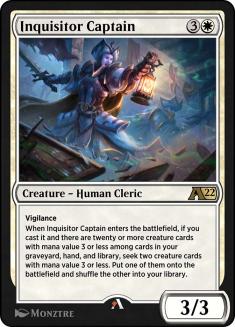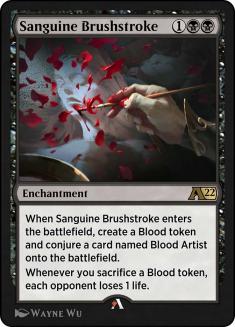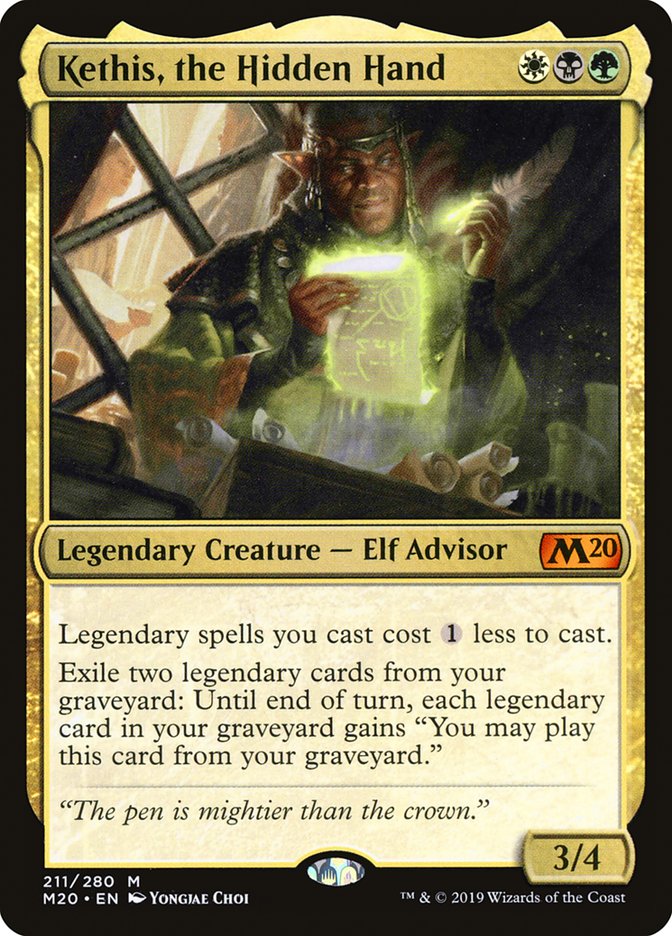Earlier this week, we had our first big batch of Alchemy changes. Are they enough to drastically change the format? My first analysis seems to be “no,” but let’s analyze the impact of each individual change.
Dungeons
As a Constructed mechanic, venture into the dungeon went largely unexplored — so much so that it might have actually been flavor text outside of Limited games. In an attempt to make it popular, Wizards of the Coast’s (WotC’s) latest announcement buffed several dungeon-related cards, some of them quite significantly.
These are huge upgrades to these cards (doubling the power of the creature and shaving three mana on the activation cost of the land), and they’re joined by a host of smaller upgrades on other dungeon cards. Are these changes big enough to make venture into the dungeon see play?
In my opinion, no. This is because the problem with venture into the dungeon cards isn’t the rate on the cards, but the fact that I just don’t really want to venture into the dungeon. Look at the dungeons:
None of those are any good! It doesn’t matter that it’s now easier to gain one life. I wasn’t interested in gaining one life to begin with, so this adds very little.
On top of that, the mechanic is highly parasitic. You can’t just have one or two venture into the dungeon cards in your deck and expect to accomplish anything meaningful. (Or, rather, you could, but then you’re really playing them for their rates outside of the venture into the dungeon mechanic. If Uro, Titan of Nature’s Wrath ventured into the dungeon we’d still happily play it). This mechanic demands that a lot of different cards in your deck venture into the dungeon. Since you’re paying a huge cost and the benefits aren’t there on the dungeons themselves, you also need several payoff cards, which means that’s basically your entire deck right there.
In the end, I believe that the dungeons themselves are such low value that the mechanic is still not going to be strong. The one shot it has is Nadaar, Selfless Paladin coupled with Triumphant Adventurer, but then it’s going to be a side aspect to your deck because these cards are almost reasonable on rate alone, rather than a dungeon deck specifically. Sometimes you will complete a dungeon to get more value from Nadaar and sometimes you will just get a scry and a Goblin or a scry and a Treasure and that’ll have to be enough.
Town-Razer Tyrant
Town-Razer Tyrant got changed in two ways, and it’s honestly hard to say which change is less relevant for its playability — only being able to target nonbasic lands or having a capitalized R in “Town-Razer.”
Due to the nature of its ability, Town-Razer Tyrant always wanted to target nonbasic lands anyway, so the only way this changes anything is if someone is playing a monocolored deck, which is not super-common in Alchemy after the Faceless Haven nerf (Mono-Green Aggro has mostly been supplanted by Gruul Werewolves at this point, for example). Even the Mono-Green deck has several nonbasic lands, so you’re very likely to find targets regardless, though it could sometimes miss. I basically don’t think this nerf impacts the card’s playability at all.
Fearsome Whelp
Fearsome Whelp got two changes — first, it now triggers on upkeep (as opposed to the end of the turn), and second it gained haste to make up for it. In practice, this means that you have a one-turn window to kill it before it triggers, whereas the old version required an instant-speed removal spell immediately. Sometimes it’s not going to matter, but a lot of the time it will, such as when you have Divine Purge, for example.
If they have instant-speed removal, then both cards are the same. If they don’t have any removal, then the new version is better, as the discount will work the same way and you get an extra point of damage in. Finally, if they have sorcery-speed removal (or if they were tapped out), then you get a point of damage in but lose the discount, which is almost certainly going to be much worse (but hey, sometimes it’ll be better).
Overall, I believe this is a nerf to the card, but not an immense one. Being more vulnerable to Divine Purge and The Meathook Massacre in particular is annoying, but a lot of the time it’s not really going to matter.
And where does this leave the Dragons deck? I’d say it leaves them basically where they were before. In fact, it might be an upgrade, because it’s arguable that other decks lost more than Dragons, which has barely changed. There are several different versions of the deck, ranging from Mono-Red Aggro to Jeskai, but Mono-Red seems to be the most popular.
Personally, I didn’t think the Dragon decks were very good. They operated like ramp decks in that they needed to draw the right cards in the right order, except the payoff wasn’t that strong. It’s certainly a playable deck, and it has some very strong nut draws (though it’ll have fewer of those now that Fearsome Whelp is easier to kill), but I think it’s solidly in Tier 2 at this point and will remain so after the changes.
Divide by Zero; Lier, Disciple of the Drowned; and Hullbreaker Horror
These three cards were nerfed, and since they were part of the same deck, it makes sense to examine them together.
Divide by Zero got a nerf, and it’s meaningful, but I’m not sure it changes that much. It was a very strong card in the deck and it remains strong, even if it’s not going to learn if you cast it on an expensive spell. It will definitely feel less punishing to cast your six- or seven-drop into this, though.
The real reason Divide by Zero might see less play, however, is the two other nerfs.
Lier was a very strong card that was super-annoying to play against, and a lot of the reason it felt this way was a feeling of hopelessness. A lot of the time, they cast it and the game became inevitable. What were you supposed to do, grind through their three Divide by Zero, two removal spells, and two bounce spells?
Now that Lier is sorcery-speed only, it’s significantly weaker. A big part of the appeal was that it could easily protect itself (even if it was through bouncing itself with Fading Hope), but now it can never do that unless you have the cards already in your hand. Trying to fight Lier with something like Blizzard Brawl was a hopeless proposition, since they always had removal in their graveyard, but now it’s a very real thing.
Lier still works with discard spells such as Duress and Go Blank, but that’s basically all it works with, and that’s not good enough anymore. Sure, you can still main-phase things like Consider and removal spells, but that was just not the play pattern you ran the card for. I suspect that Lier is going to be removed from all competitive lists from this point on. A consequence of that is making Divide by Zero less powerful.
The third nerf, on Hullbreaker Horror, is a weird one, because it is meaningful, but it’s only meaningful in mirrors, which means it sort of evens things out. If you play Hullbreaker Horror against a nonblue deck, it’s exactly every bit as good; if you play it against a blue deck, it’ll be worse than it was before, but exactly as good as their Hullbreaker Horror. So, if every blue deck just “handshakes” Hullbreaker Horror, it’s as if it was not nerfed at all, and I’d much prefer a nerf on its ability to bounce itself and save itself from removal spells. That said, it’s possible that blue decks eschew Hullbreaker Horror altogether now that’s counterable. If this happens, then other decks won’t have the displeasure of dealing with it.
The nerf on Hullbreaker Horror also makes Divide by Zero worse, because it was the main way of dealing with the card to begin with. Now that it’s counterable, you can just run some Disdainful Strokes and get it over with, so Horror is no longer the ultimate trump in control mirrors.
My verdict is that Lier is totally dead and that Divide by Zero and Hullbreaker Horror got worse but are still playable.
Inquisitor Captain
The Inquisitor Captain nerf is very painful, given that the best hit for the card was Glasspool Mimic most of the time, and that no longer works. You also can’t blink it or search for it with Pyre of Heroes, which definitely limits its applications as well. That said, I think the card is still reasonable as just a fair game-piece — it still has that Collected Company feeling even if you can’t blink it or go off. It’s going to be played in fewer decks, but it’s still a rather good card in, say, a Clerics deck, which got a little worse but should remain Tier 2.
Sanguine Brushstroke
This is a nerf to the card, but only against certain decks. Sometimes Sanguine Brushstroke only gained one life over the course of the game, but other times you drew multiples of them and then you went off with lifegain. Overall, I think this weakens the card and the deck but it does not kill them.
Teferi, Time Raveler
I’m a huge fan of the change to the passive ability of Teferi, Time Raveler; I feel like it was always meant to just stop you from casting stuff on your opponent’s turn, and instead it interacted weirdly in a very unintuitive way with stuff like Finale of Promise or Emergent Ultimatum. It was probably still too good at 1UW, so the change makes sense, but the card is now significantly worse because four mana is a lot more than three mana.
Can this card see play? It’s hard to say, but I think so. The difference is that it used to be a generically powerful card that you wanted against everyone and it happened to hose control decks entirely, whereas now it’s a card that you only really want versus control. It’s not a disaster if you have to go Turn 3 Divine Purge and Turn 4 Teferi their follow-up, but you won’t want this card in your deck against, say, Gruul Werewolves.
Still, we’ve proven we’re willing to play four-mana sorcery-speed cards in our control decks (both Key to the Archive and Teferi, Who Slows the Sunset see reasonable play), and Teferi, Time Raveler does seem like a powerful answer to a Turn 4 Key to the Archive. Sure, they get to grab a card from the spellbook again, but you end up with a resolved Teferi, which can make quite a difference.
Teferi, Time Raveler is also a critical piece in the Kethis Combo deck, though whether that deck is good or not I don’t know.
Moving Forward
So, where does this leave us? I honestly think that it doesn’t move the needle very much. In fact, I’m not sure these changes will do anything to change the format. They might make certain decks less frustrating to play against, which is a worthwhile goal in and of itself, but I don’t believe they will change the composition of decks that are good in the format. Prior to these changes, I believe the best three decks in the format were Izzet Control, Azorius Control, and Gruul Werewolves. After the changes, I believe the best three decks are still Izzet Control, Azorius Control, and Gruul Werewolves.
Gruul Werewolves lost nothing (only a meaningless nerf to Town-Razer Tyrant), so if anything it got even better. Izzet Control and Azorius Control had some of their key pieces nerfed, but I don’t think the nerfs truly impact the decks’ viability. I think you definitely don’t want to play Lier, but Hullbreaker Horror is still a good win condition and Divide by Zero is still a versatile answer. With Hullbreaker Horror now counterable, though, you might want to replace one copy of Divide by Zero with a Disdainful Stroke, but I wouldn’t make any big changes.
So, in the end, this is where I believe Alchemy stands after the nerfs (not ordered within the tiers):
Tier 1:
- Gruul Werewolves
- Izzet Control
- Azorius Control
Here, I believe Azorius Control is better than Izzet Control versus the field, but Izzet Control is better in the control mirror. If you expect a lot of blue decks, play Izzet; otherwise, play Azorius.
Tier 2:
- Dragons
- Orzhov Clerics
- Sanguine Brushstroke decks
Tier 2.5
- Mono-Green Aggro
This is the extent of the decks that I could be persuaded to play. I don’t think other decks have what it takes at this point. Still, I’d be happy to be surprised.

